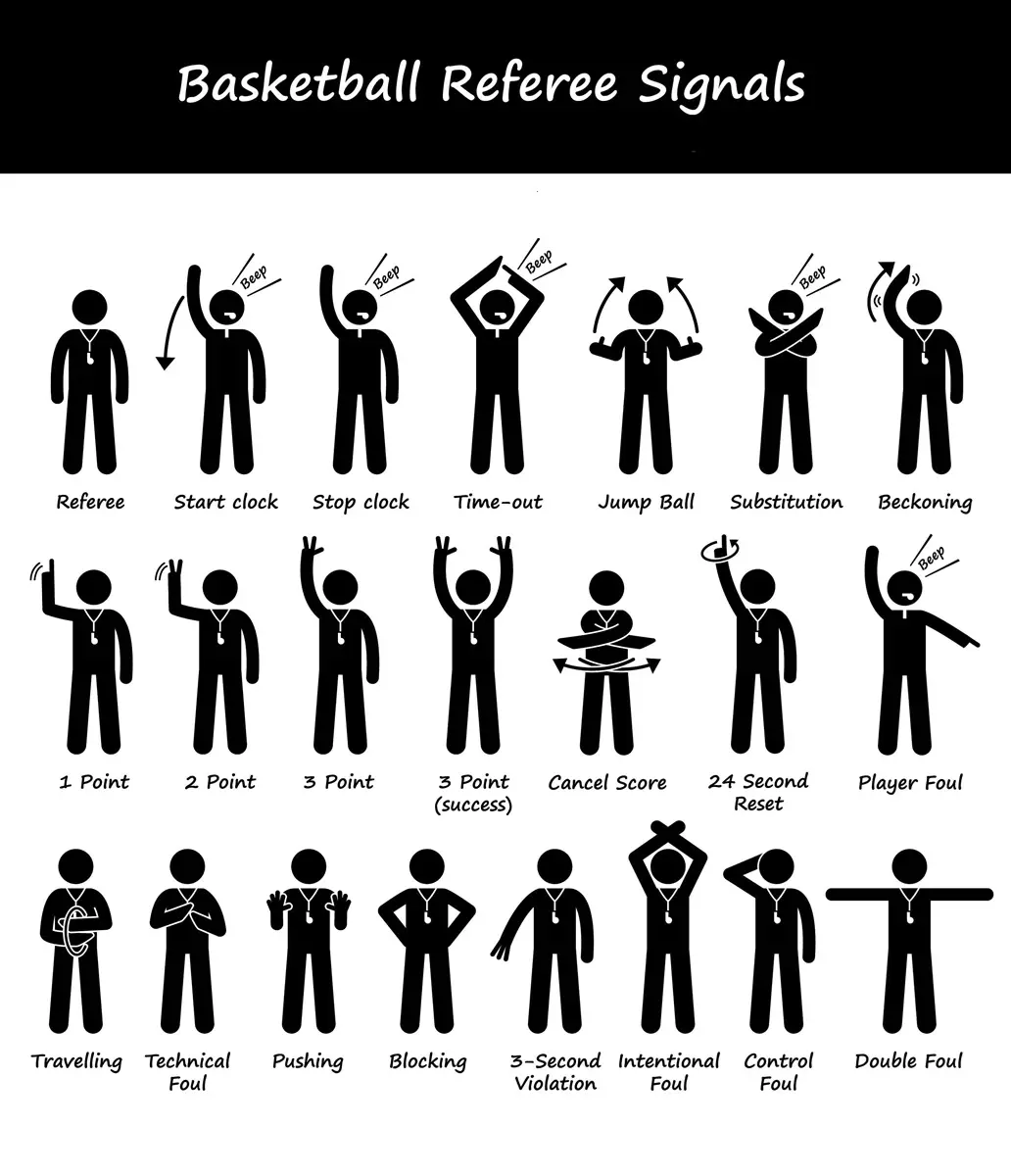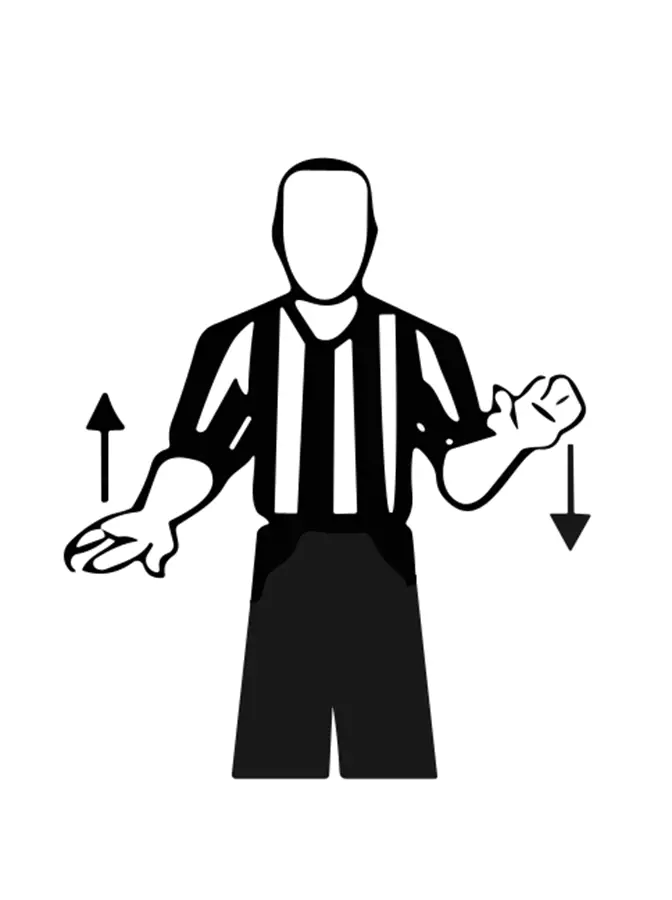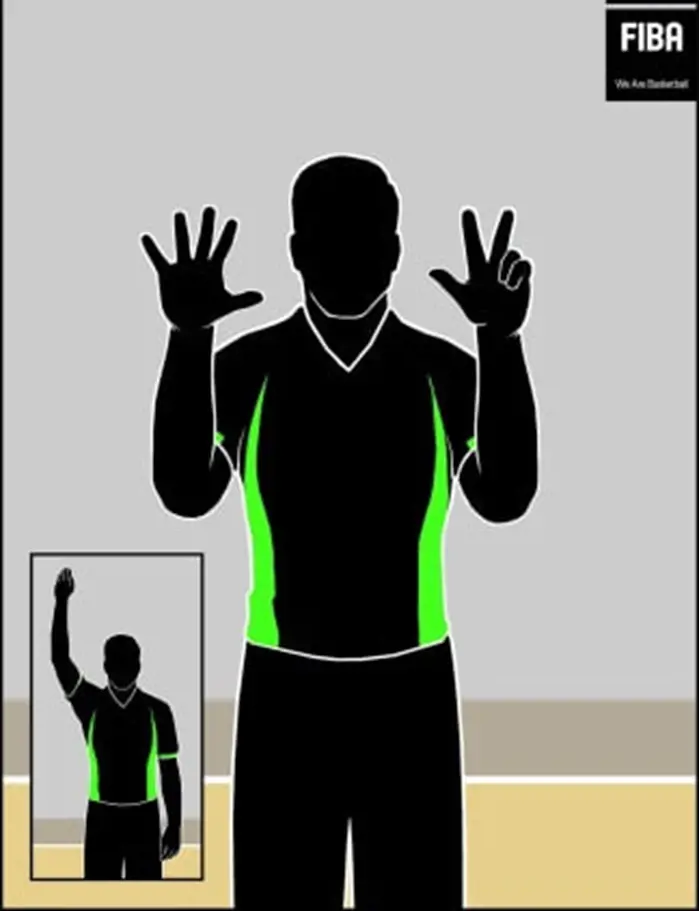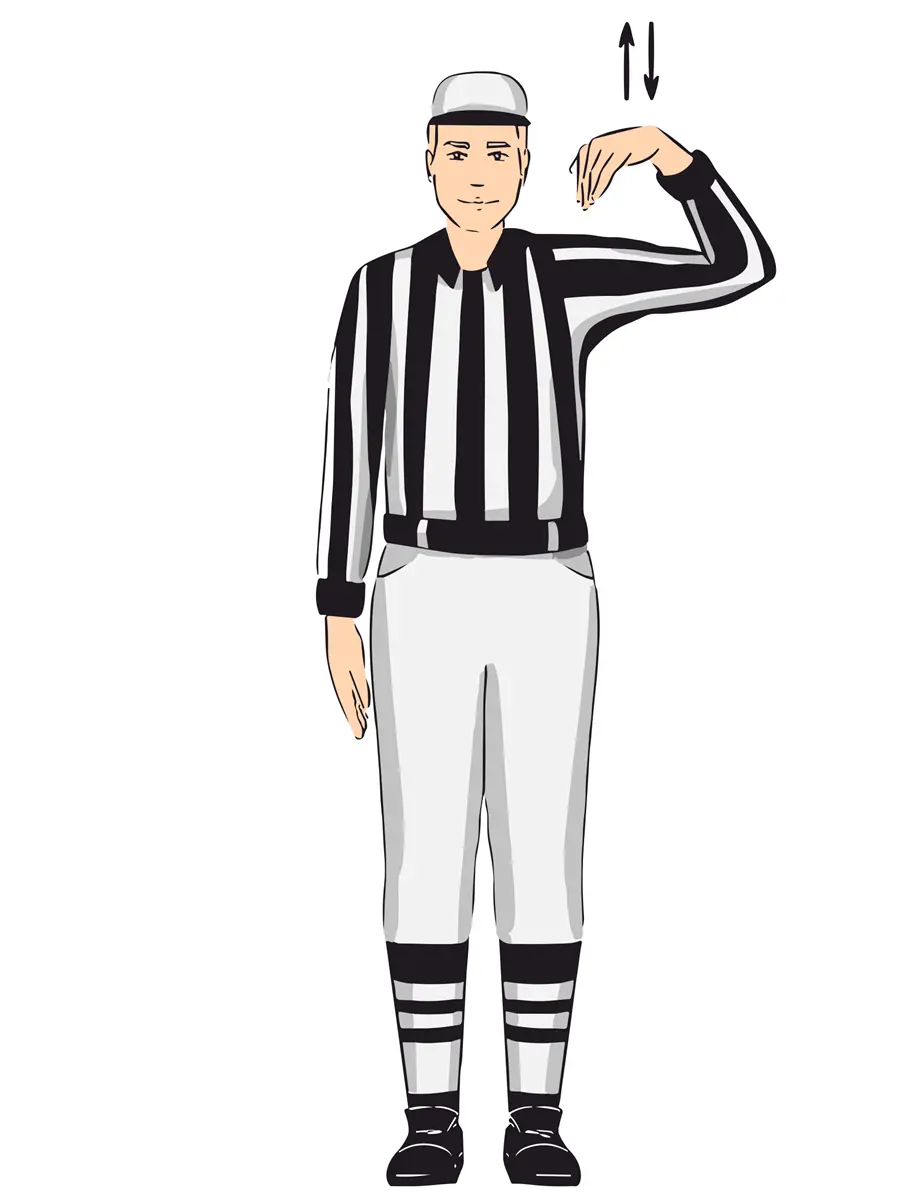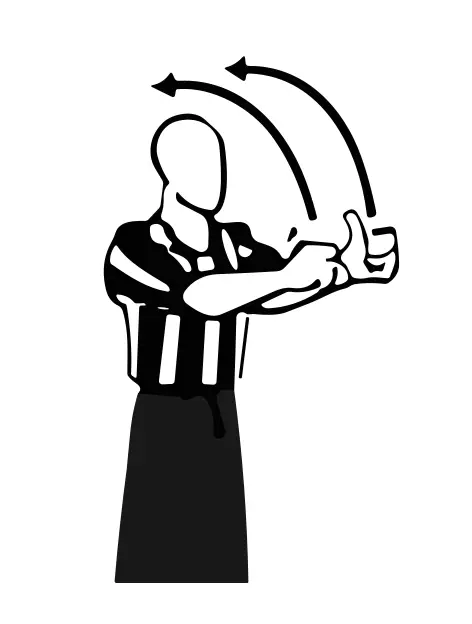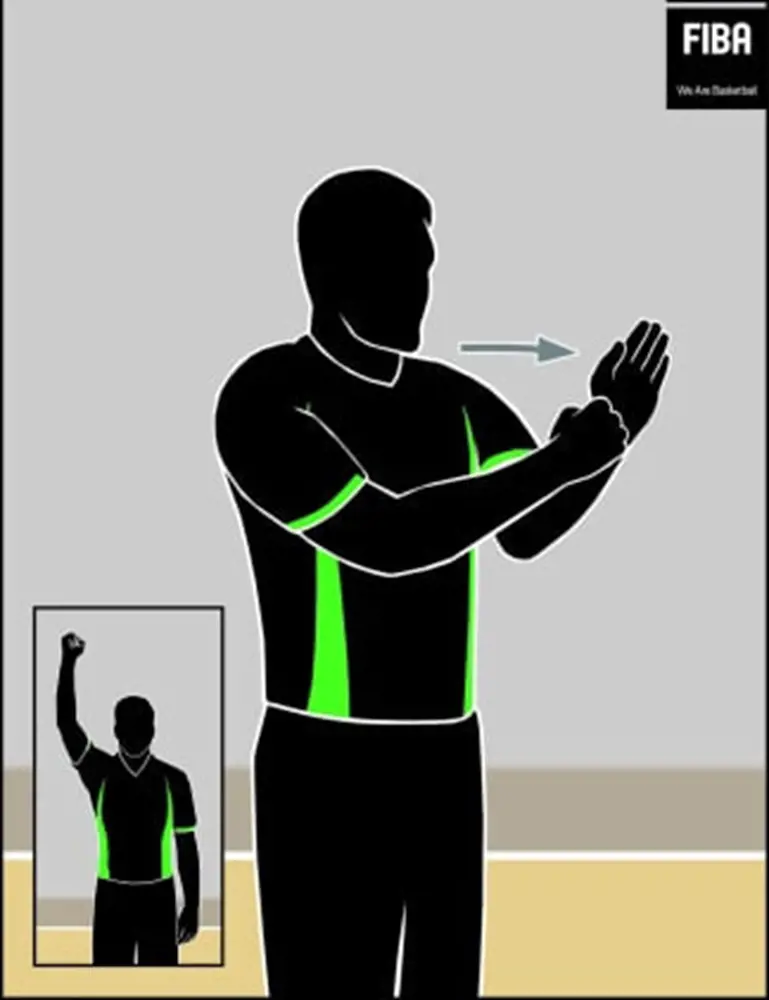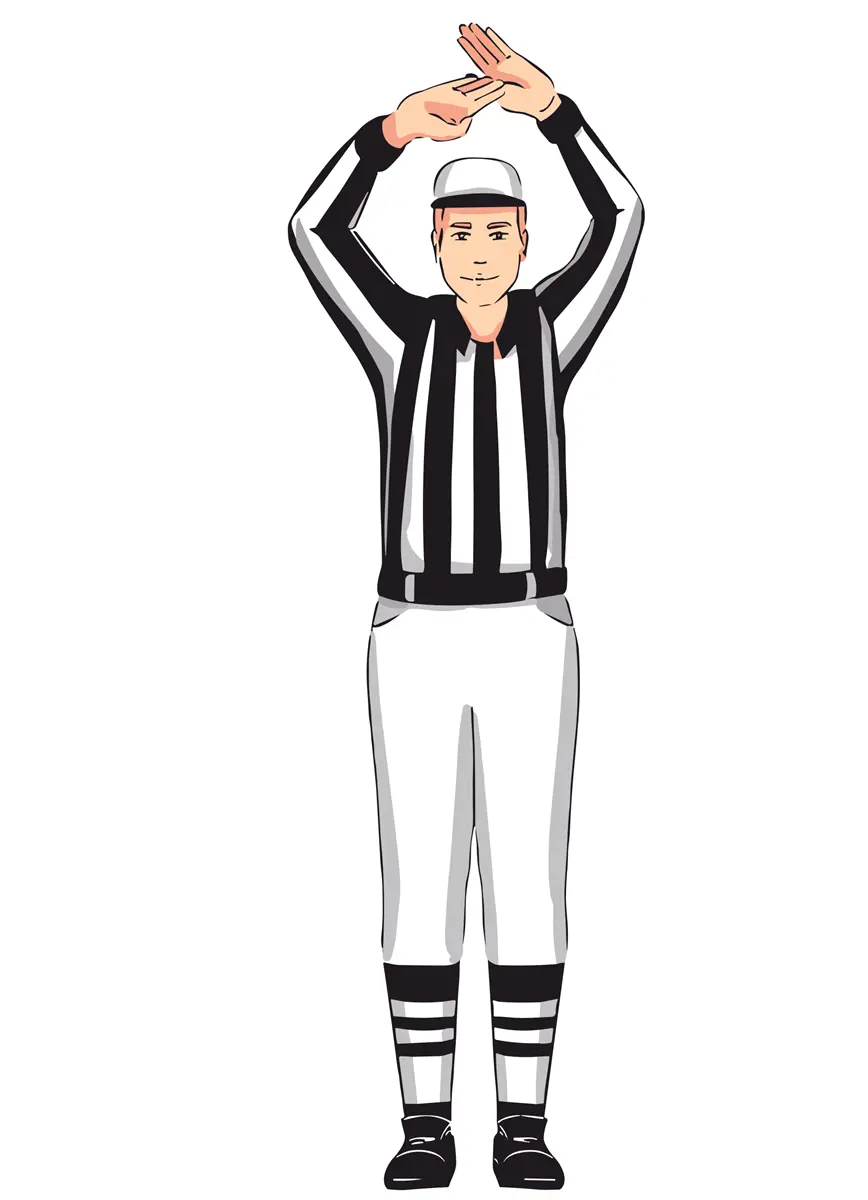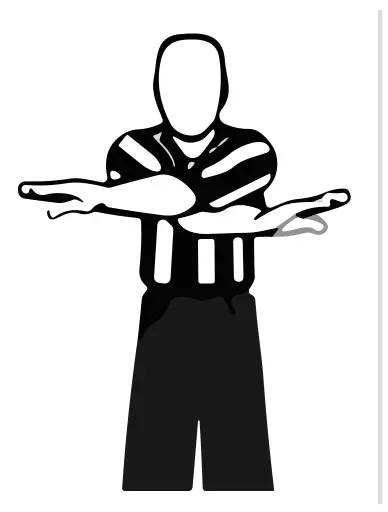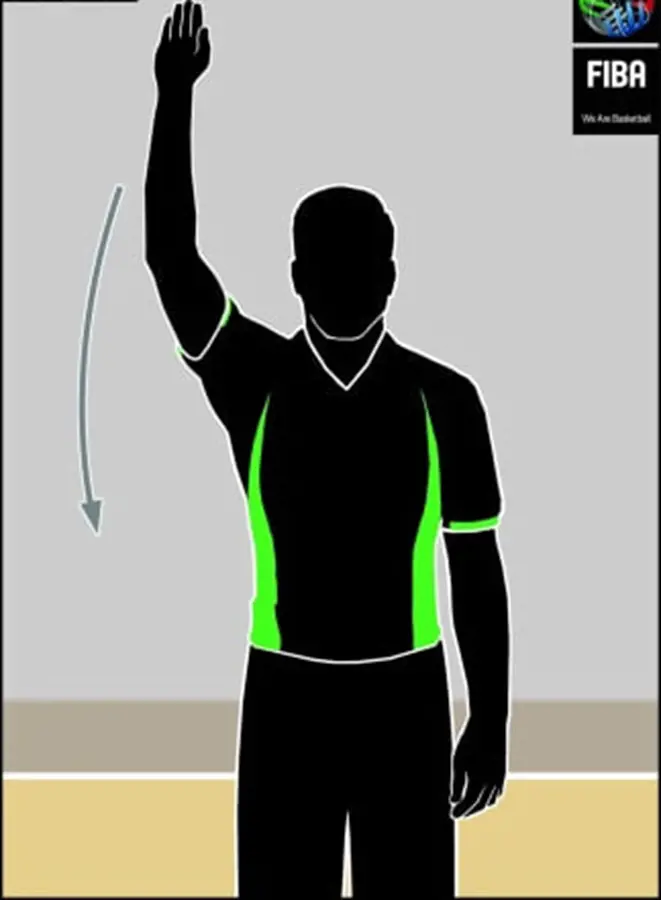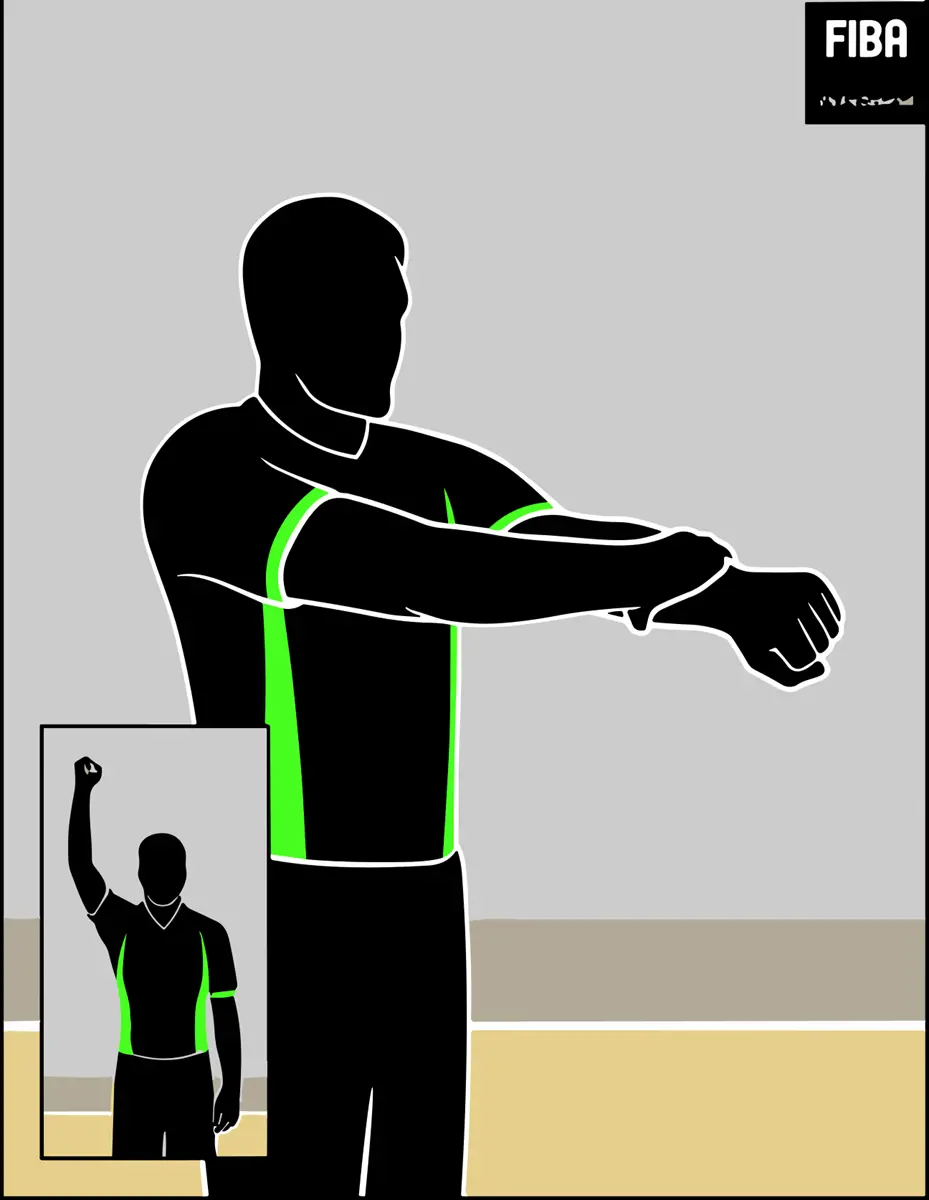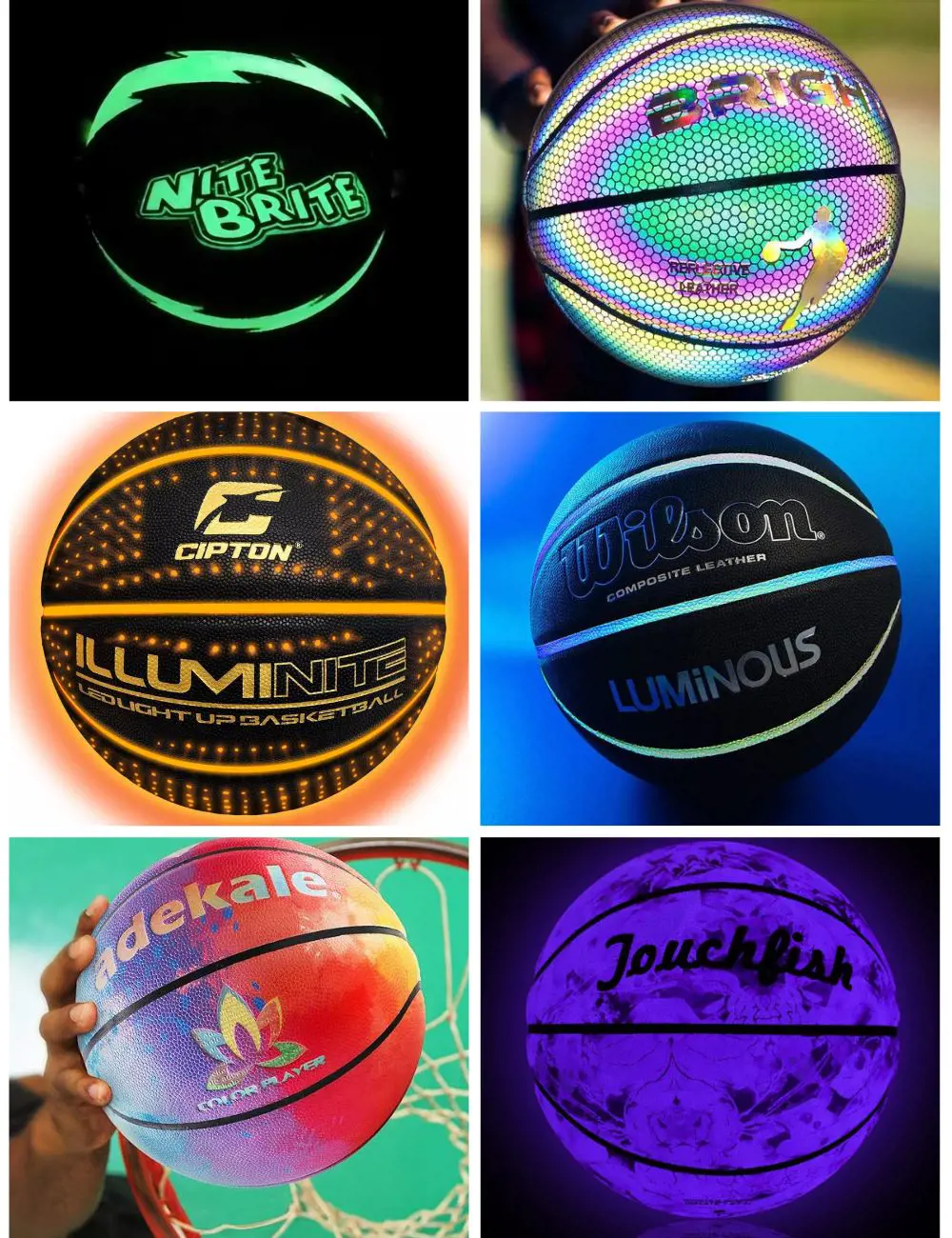1. Traveling
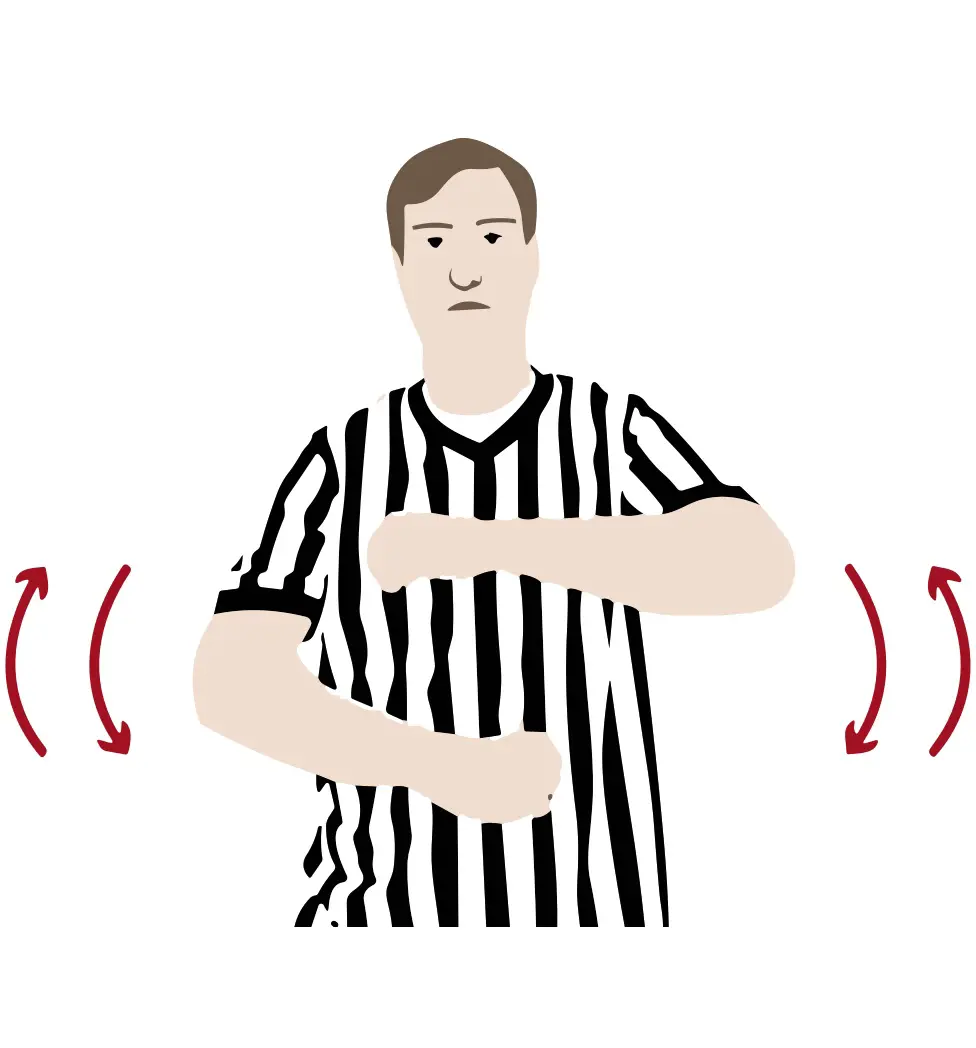
When a player illegally moves one or both of their feet without dribbling the ball, they commit a traveling violation.
This means that the player has taken steps without properly establishing a pivot foot, leading to an unfair advantage. The referee will indicate this infraction by crossing both arms in front of their face and making a circular motion with them, signaling to all participants that the traveling violation has occurred.
A shuffle of the feet prompts the referee's "traveling" signal, highlighting a player's illegal movement without dribbling.


